The Atmo Sfera Platterless turntable certainly raised a few eyebrows on social media when we announced we would be reviewing it, it’s just like nothing else out there! Ian Ringstead checks out this Italian oddity costing £3500 including arm and cartridge.
I first heard about this unique design when I saw the press release for it on Hifi Pigs news pages (dated 31st March 2016). The date is significant because as the following day was the first of April, I immediately thought it was an April fool’s day wind up. This is not a criticism of the design but my reaction to such a radically different looking turntable and approach to achieve high end sound. On first seeing the turntable I thought what on earth was the designer Paolo Caviglia thinking of when he came up with the concept? To look at, it reminded me of a tower crane (which represents the arm and cartridge) next to a domed building such as the Sistine Chapel in Rome. The model I received for review was in a fetching gold and black finish with an Ortofon Quintet Bronze moving coil cartridge.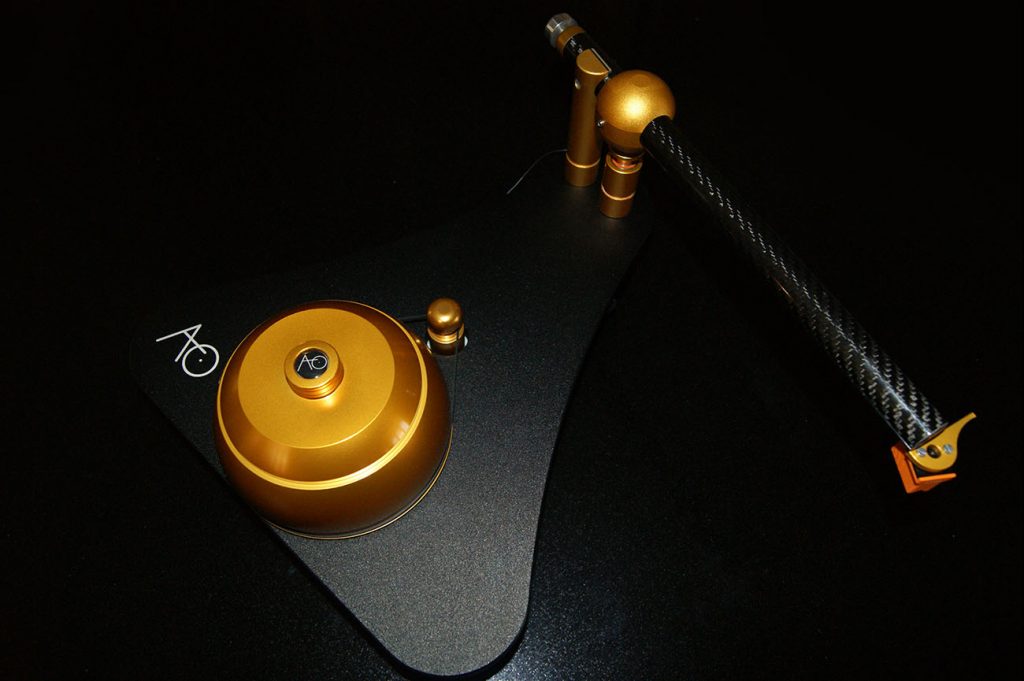
The Atmo Sfera has been funded by a Kickstarter project (95 backers pledged €61,509 to help bring this project to life).
Putting Things Into Context.
Having attended The Munich High End Show last year I was amazed by the plethora of extraordinary turntable designs on show and the incredible prices of some which were gargantuan in size and price (£100,000 plus). Now I have seen many designs of turntables over the last 45 years and some have been truly incredible to look at and listen to. Ira Gale’s Perspex turntable from the seventies was a sight to behold and then the amazing Oracle Delphi, which I had the pleasure of selling and setting up for a customer in the eighties with a Fidelity Research FR-64S tone arm and Koetsu Black moving coil cartridge. (Nice !!!!) Oracle burst on the scene in 1979 with the Delphi turntable, and to many, set a new benchmark for analogue playback. The Oracle also blazed a new trail for turntable aesthetics; its open suspended chassis and clear acrylic plinth dramatically contrasted with those of the then-voguish British turntables. The audio magazines loved it. After forking out £2,000 and adding a tonearm, many listeners (including yours truly) found themselves in analogue bliss. However, back then, £2,000 represented a lot of money to spend on a turntable; my first house was only worth £15,000 in 1982.
The Design Philosophy.
Atmo sfera literally means steam and sphere. The idea behind the name is therefore an analogy of the design where the cup and clamp form the sphere and the steam is the air supporting the record. Modern design and materials allow the designer to think out of the box far more than they ever imagined they could a couple of decades or so ago. To revolutionize the classic turntable design with all its drawbacks, such as heavy weight, size, playing mechanism and vulnerability to vibration and to achieve the highest sound quality, Audio Deva, the company behind the Atmo Sfera concentrated on only the key components, using high-quality materials.
The result is an engineering masterpiece producing playback audio quality, that Audio Deva feels surpasses even the most sought after turntables. In the Atmo Sfera turntable there are no gimmicky accessories, it is solely focused on music-making components.
The Atmo Sfera Turntable is designed primarily for being a beautiful piece of design and is fully designed around a small circle (the design originator), with the diameter of an LP label. This gives to Atmo Sfera a shape directly related to its function. Audio Deva didn’t create a platterless turntable for the sake of the platterless design, but the creation of the platterless design was a side effect of creating a beautiful turntable. The Atmo Sfera shape is not, however, primarily dictated by the designer’s taste, but it is ruled by the technical and sonic features they had in mind.
“The first design rule of a mechanical or electrical engineer should be: if it is made of an elastic material, it stores energy…
…and the second rule is: if it stores energy, it releases such energy, sooner or later.” Say the company, continuing “The uncontrolled energy, stored and released, causes distortion of the sound, in an average turntable. Mass is one way to try and control the sound in a turntable, but the concept of (huge) mass in a turntable is completely meaningless, unless you consider also how this mass is distributed. Damping is another method, but damping actually means spreading the stored energy of the physical body all around the audio spectrum, with bad results”.
So, how is the Atmo Sfera different: Every man-made turntable has an elastic behaviour, so Audio Deva chose to put all “resonances” (the effects of the energy release) in a part of the audio band in which they cannot be very harmful.
First thing first: they chose to make the entire Atmo Sfera body in Anticorodal aluminium; aluminium is stiff and has a pretty isotropic structure; the behaviour of the aluminium is fully predictable. Second, but a very important, issue: the shape of the turntable base and of the LP disc support are designed to show a series of natural vibration modes far away from the audio band or from the vinyl resonances.
Take, for example, the small reverse cup that holds the vinyl record: the cup and the record screw down clamp form a hemisphere, that is a solid with controlled and predictable vibration modes. Audio Deva fix the turntable motor directly to the base, without the use of damping material.
Next step for a turntable design: how to guarantee a rotation free of wow and flutter, especially with a low mass platter which can’t rely on inertia. Audio Deva say the secret is simple: “Imagine you have two different drive belts for your turntable: the first made of rectified silicone rubber, like those used in many British turntables, the second belt made by a rubber band used for closing small packets. Should an audiophile choose one of them for his turntable, he will undoubtedly choose the rectified silicone rubber belt without any doubt”. Paolo Caviglia, instead, chose the rubber band, because it helped him get the results he was after.
Audio Deva really tested the rectified silicone etc. against a rubber band and the rubber band performed better in their design, from a point of view of wow and flutter ratio.
The arm is another interesting part of the design which is different to any other arm I have seen or used. Audio Deva are very serious about this design and are keen to make use of the turntable and arm as simple as possible. This means the arm generally comes set up for use by the dealer and is a plug and play design where all the end user has to do is plug it into their system, place a record on the mini platter, screw the clamp down and place the stylus on the record. The arm has no obvious means for adjustments (as this is done by the dealer after the relevant training) and Audio Deva don’t supply any instructions for the customer to try it themselves. I asked Duncan Saul of Intimate Audio, the UK importer why this was the case? He replied that Audio Deva felt that the customer shouldn’t have to worry about set up as most customers expect or are happy to let their dealer do this for them. As a very experienced turntable installer I would have liked to have been able to experiment myself, but I respect Audio Deva’s approach as they want to take all the hard work out of the equation for the customer, who should just enjoy the end results. One of the first things I observed about the arm is that there is no cueing device or obvious arm rest. Instead the user must manually place the stylus on the record and take it off at the end. So, steady hands are an absolute must. The arm is cleverly held in the rest position by a magnet built into a second pillar behind the main arm pillar that holds the arm securely. At first this seems strange, but with use I soon got the hang of it.
The record clamp which is a critical part of the decks design and function is beautifully engineered and screws down on to the record via the threaded centre spindle. This isn’t a new idea of course, but it was at this point that I got frustrated because the finger hold on the clamp is very smooth with just two small groove cut into its vertical surface for grip. Now I haven’t got large fingers by any means but I found gripping and screwing the clamp on or off quite a fiddly process and once off I had to be careful not to drop the clamp. I spoke to Duncan about this issue and he came up with a solution by sending me a couple of rubber O-rings that fitted very snuggly into the grooves on the clamp and made gripping and using it far more practical. I applaud beautiful design but it needs to be practical. Look at some of the beautiful pieces of furniture out there such as chairs. It’s no good them looking superb if they are terribly uncomfortable to sit in or get out of.
The turntable is actually very compact in size due to the lack of the usual 12”/30cm platter and the plinth supporting the motor, record cup and arm sits on three inverted metal cups with rubber feet that are sprung. The bearing spindle shaft is made from Ergal aka alloy 7075 which has been the standard workhorse 7XXX series alloy within the aerospace industry since 1943.
The power supply is kept separately away from the turntable in either a neat highly machines metal elliptical case or the cheaper plastic box which I had. Connection is made by an RJ45 Ethernet cable. Speed change is on one rocker switch and power on another switch. There is also a power switch on the turntable plinth under the arm assembly. Connection to the amplifier or phono stage is by a separate RCA cable of good quality and length, with a separate fixed earth cable that is terminated with a spade connector. This does mean if you want to experiment with different arm leads you can. I tried my Way silver interconnects and had good results.
That’s the theory and design quirks. Does it work?
The Sound
Everyone I spoke to or who saw the turntable in the flesh said how can it work and it wouldn’t have any bass due to such a small platter and no support for the record. Well how wrong they were!! I was as sceptical as anyone, but as a reviewer I need to be open minded. You must admire the lateral thinking that has gone into this turntable. Duncan Saul of Intimate Audio (The UK Distributor) was so impressed by Audio Deva’s passion and the care and attention they take, that when he went for a factory visit in Italy, he was convinced to import the turntable and distribute it here. Of course, the sound had to be exceptional and Duncan loved what he heard. A light, airy, tight and fast sound is how Duncan summed up the Atmo Sfera
Once you acclimatise yourself to the presentation it’s rather good. The Ortofon Quintet Bronze supplied (and recommended by Duncan and Audio Deva) is similar in sound to my Quintet Black, so within reason I could compare the Atmo Sfera against my Project Extension 9, which is about half the price, to see how it faired. The first record I tried was an old favourite, Peter Gabriel’s fourth album. “Shock the Monkey “and “Lay Your Hands On Me “are classic tracks which are both superb musically and have great dynamics. Both turntables turned in a very creditable performance with clear well defined bass and great dynamics on the drums in both tracks. The difference between the turntables wasn’t big considering the price gap. The Project 9 had slightly deeper bass and more slam with a seemingly better extended treble, but the Atmo Sfera was still very clear with well-defined bass, an open midrange and a duller treble. Now these are my observations and I would say the Atmo Sfera has a light and airy sound with good pace, therefore some may perceive this as duller. Whether it’s because it’s controlling the top end better and being less coloured I can’t say. Bearing in mind that the two Ortofon cartridges are different and the top end of the Quintet Black is better, without being able to swop cartridges over, (which wasn’t possible as mentioned earlier) then I suspect both turntables were showing the capabilities of the cartridges faithfully. I know Audio Deva has experimented with many cartridge combinations and they like what the Quintet Bronze does partnered with their turntable.
After the comparison, I concentrated on the Italian job (pun intended) and tried a wide range of music with London Grammar’s double album (45rpm) “If You Wait” and the opening track “Hey Now”. I know this album is an overplayed show favourite due to its excellent recording quality and superb songs, but I really like it and make no excuses for playing it. The haunting lyrics and voice of Hannah Reid really shone and when the bass kicked in I had a big smile on my face. This album was recorded and mixed at several studios, but it really works well as modern digital technology allows artists and engineers to be on different sides of the world and still put a great album together.
I spent a couple of months getting to know the Atmo Sfera and it is not without its quirks. Due to the low mass and inertia of the cup and motor torque the record will start up very quickly and reach speed within a revolution ,whereas my Project takes a few revolutions due to the platter mass. When you try to clean a record with a carbon fibre brush as the record rotates the record will stop rotating unless the pressure of the brush is very light. Also, because there is no platter you can see the record with all its imperfections bobbing up and down as it rotates. No record is perfectly flat as I discovered years ago, and the Atmo Sfera clearly points this out. I must point out that apart from looking peculiar it has no effect on the sound or performance of the arm and cartridge. In fact, I believe the arms clever design aids the tracking ability because the cartridge is mounted below the bearing housing rather than being in line with it when you look at it sideways on. Apparently, Duncan said when he visited the Audio Deva they played a record that looked like a force ten gale at sea as the arm moved up and down so much but still managed to play the record successfully.
If you get over the idiosyncrasies of this design and let’s be honest most high end designs have them (look at Ferrari cars; beautiful to look at and drive brilliantly on the right roads, but are not practical around urban areas in busy traffic or taking the kids and wife shopping, you get my drift), then it offers a radical alternative to other turntable designs. It’s neat and compact, easy to use and requires very little set up.
I admire Audio Deva’s belief in this product and taking a very brave step in designing and manufacturing something out of the ordinary. The turntable comes in a variety of finishes – base colour black, silver or orange. Accent colour silver or gold.
Build Quality: Excellent precision engineering beautifully finished
Sound Quality: Very good with a light, airy, tight and fast rhythm that is easy on the ear
Value for Money: Relatively expensive against its rivals but there is nothing like this in the marketplace currently
Pros: Fit and finish are excellent and generally easy to use with virtually no set up required. Very compact footprint and easy to transport.
Cons: The lack of a cueing lever makes putting the arm on and off a delicate matter that some may find tricky. Personally, I urge Audio Deva to rethink having a cueing lever as not having one may put people off. Its looks will polarise opinions, like Marmite you’ll either love it or hate it.
Price:
- Atmo Sfera `Hi-End Edition` Turntable (including matching, machined aluminium controller). – £3100.00. Ortofon Quintet Bronze (fitted) – £400.00
- Atmo Sfera `Hi-End Edition` Turntable (plastic controller as per the review example) – £2700.00. Ortofon Quintet Bronze (fitted) – £400.00
- Gold Accents – £300.00
The High-End edition has a precision steel tonearm bearing, a carbon fibre tonearm, the option of high precision machined aluminium controller and litz arm wiring.
Ian Ringstead





















































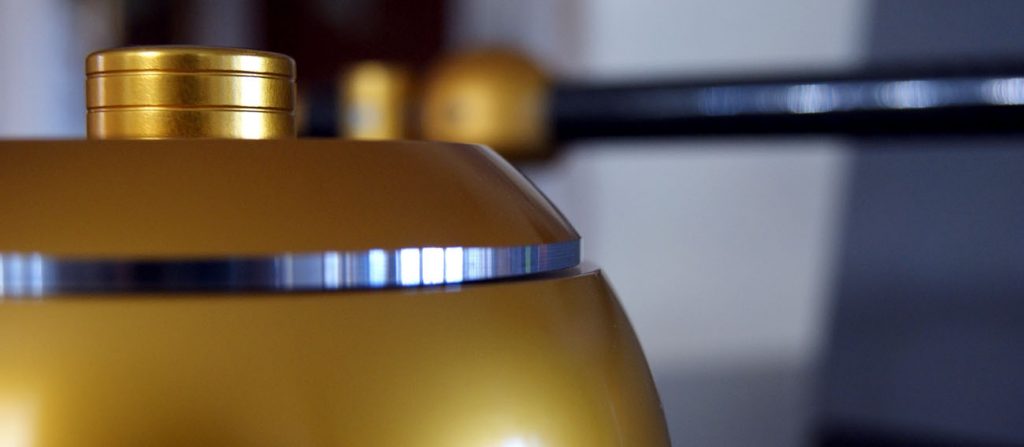
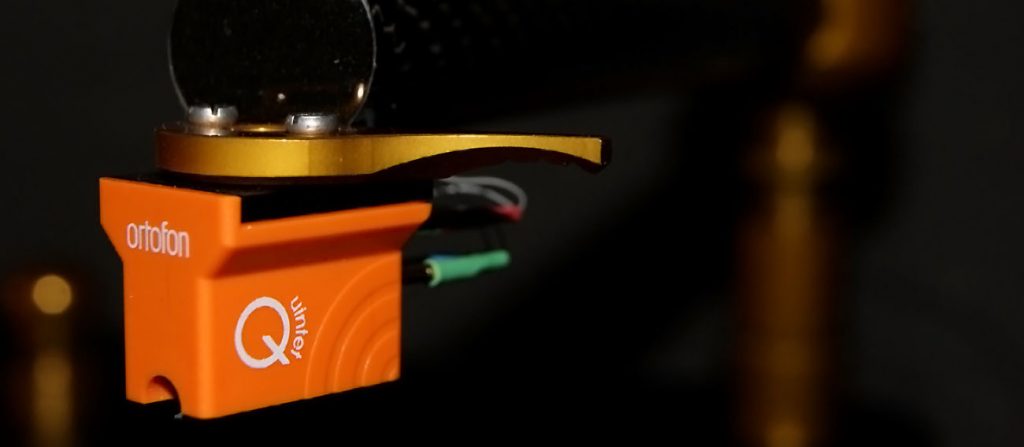

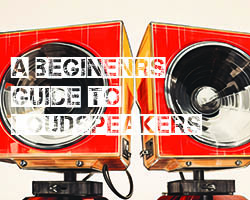









































































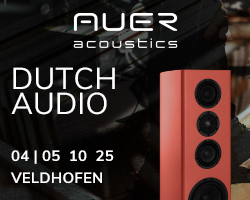






































































You must be logged in to leave a reply.